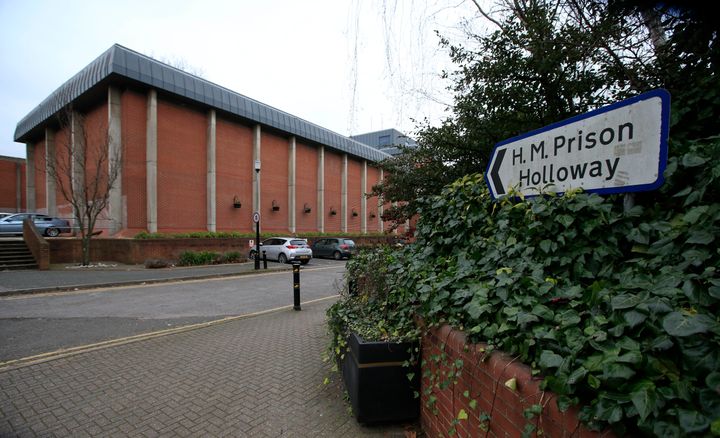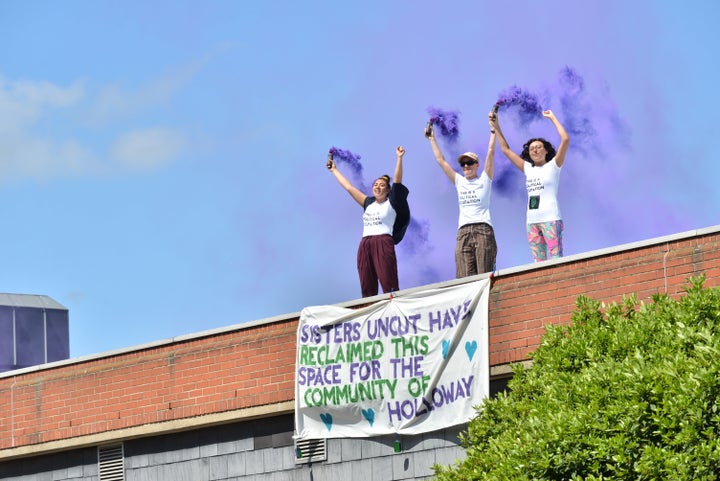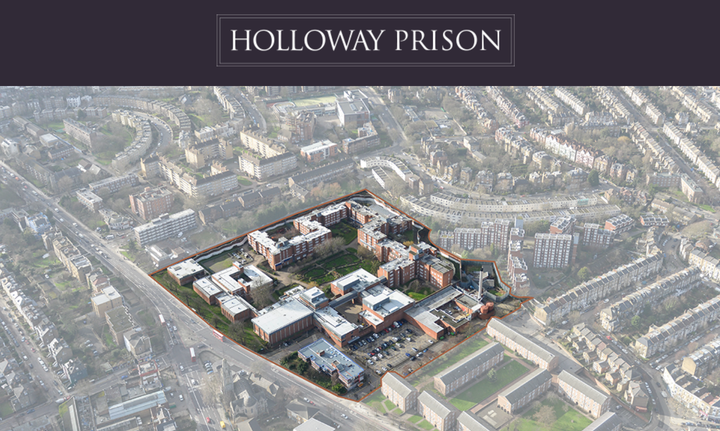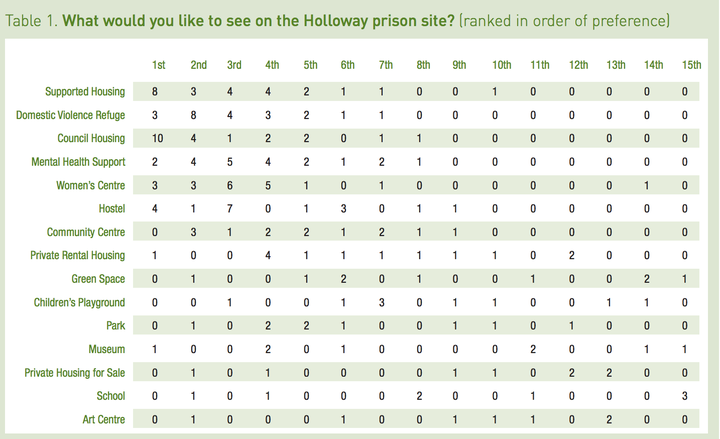Former inmates of London’s Holloway prison have described the “deeply harmful” impacts of its closure, including one woman who said the move led to her twice trying to take her own life.
Once the largest women’s prison in western Europe, Holloway in north London was closed in July 2016 after the government said the building was inadequate for offender rehabilitation.
Holloway inmates - 534 at the time the closure was announced - were subsequently moved to the Surrey prisons of HMP Downview and HMP Bronzefield in Ashford, around 20 miles away.
A new report by the charity Women in Prison (WIP) details the harrowing conditions the women were forced to endure once relocated, with some suggestion the closure contributed to a spike in female inmate deaths in 2016.
One former prisoner said she had tried to end her life after relocating to a facility 90 minutes away. The woman, who is not named, said: “I moved to Downview [prison in Sutton], where nothing was up and running, then I tried killing myself twice because all the help and support [at Holloway] was taken away from me.”

Written in collaboration with the Centre for Crime and Justice Studies, the report found the closure caused “significant distress and anxiety among prisoners and led to many women being imprisoned further away from home, hindering visits from family and children”.
Holloway’s closure, the report claims, had a ripple effect across the UK’s female prison population and may have been a factor in a “sharp spike” in deaths in prisons in 2016 - the year after the closure announcement was made.
Though the report does not prove a link between the closure of Holloway and the rise in death, anecdotal evidence tells of suicide attempts in the wake of the closure. The Holloway closure was also mentioned in an inquest into the death of an inmate at another facility - some three hours away - which illustrates that the effects were felt across the prison estate.
WIP told HuffPost the influx of new prisoners at facilities receiving Holloway’s inmates would be “really intense” for staff, with a “huge churn” occurring as prison populations were balanced. This, a WIP spokesperson claimed, would make it difficult for authorities to ensure inmates were getting the support services and medication they required.
“I have been in prison since 2014, been to five prisons, Holloway was the only prison where I saw progress, within myself and life. All that was taken away from me for no reason... I truly believe the government made a wrong move by closing Holloway.”
- Former Holloway Prison inmate
WIP Chief Executive Dr Kate Paradine said when inmates were moved to Downview prison it was “not yet fully up and running with services”.
She added that “most women” in prison have “deep rooted experience of trauma” and find it difficult to open up to someone new. “On the day that the Holloway closure was announced many women were in tears in the prison [...] Anxiety levels were high with women worried at the prospect of losing these relationships and support services.”


“The whole experience of the closure has shown that women in prison are still completely invisible, now having been pushed further out of sight, and continue to be harmed by the criminal justice system.””
- Dr Kate Paradine
The Ministry of Justice refuted the claims made about Downview prison with a spokesperson saying it offered “some of the best facilities in the women’s estate, which is one reason why it was chosen to take prisoners from HMP Holloway”.
“There is no evidence to suggest that this transfer had any impact on deaths in custody and the prison has been praised by inspectors as safe and well-run.
“Many of the services previously available at Holloway have been transferred, and the prison continues to successfully prepare women for release back into the community.”
The closure of Holloway prison was mentioned in the inquest of Maria Burke, who was found dead in Drake Hall Prison, Staffordshire, in November 2016, just eight days after she arrived there. The facility had not recorded any inmate deaths since 1996.
The inquest was told that the prison struggled to cope after receiving an influx of violent and difficult inmates due to the Holloway closure, with 78% having some form of mental health problems.

Deborah Coles, executive director of the charity Inquest, which provides support to the bereaved on state-related deaths, said: “It was clear the prison was unable to cope with the sudden change in their population, leaving many women at risk.”
Speaking as the Women in Prisons report was released, Coles added: “The failures identified at Maria’s inquest were all too familiar. Maria’s risk of self-harm and suicide was not identified and there were failures in bullying and self-harm procedures.”

The WIP report urges the Ministry of Justice (MoJ) to ensure the redevelopment of the site includes a building for women’s support services and “genuinely” affordable housing.
Tenders for the 10-acre site closed in November, with the winning bid to be announced in Spring, the MoJ confirmed.
Maureen Mansfield, a campaigner with Reclaim Holloway, added that the Women’s Building should become a “positive legacy” on a site once used to imprison suffragettes, and would help “reduce the need for prisons” to be built.
“Such an opportunity is a fitting legacy to the long history of the site as a women’s prison. Women who were held in the prison should not be forgotten, displaced and moved further out of sight. This land, on which their tears, their memories, their babies, their laughter was heard holds echoes from the past and hope for the future."”
- Maureen Mansfield, Reclaim Holloway
The call is backed by Islington Council and local MP, Labour leader Jeremy Corbyn, who recently addressed a public meeting on the future of the site.
In January, the council adopted a proposal pledging it would only back developments that hit a target of at least 50% affordable housing and included a space for community benefit, preferably for women, following a “record public consultation process”.
Islington Council says the re-development must include:
• A minimum of 50% genuinely affordable housing
• A mix of housing types including a significant proportion of family accommodation
• Social infrastructure such as a women’s centre providing vital rehabilitation and support functions for vulnerable women
• High quality, publicly accessible green space, including play space
Paradine said WIP had initially hoped Holloway’s closure “signalled” authorities were trying to reduce the prison population and move towards “community alternatives”, but “the reality could not be further from the truth”.
Richard Garside, Director of the Centre for Crime and Justice Studies, added that the decision to close the prison had “ignited a campaign... aimed at achieving a positive legacy: a redeveloped site guided by the needs and aspirations of the local population”.
The Government closed HMP Holloway to help fund nine new prisons as part of a £1.3 billion overhaul of the UK prisons service, prompting fears they had simply chosen it because of its value to developers.
Property sources told the Evening Standard in August last year that the site, opened in 1852, could be worth over £200 million and would potential be used for up to 5000 homes.

In confirming the timeline for the sale, the Ministry of Justice told HuffPost that it “will always seek best value for the taxpayer”, but added that it was working closely with the council “and others” on the deal.
Erika, a former inmate at Holloway prison and campaigner for the women’s building, reiterated those fears in the WIP report, saying she felt the facilities closure was “forced and ill-conceived, the spin masking the real reasons of pure financial gain”.
“There must be a range of alternative solutions rather than imprisonment that would work for both offender and society, and I hope that by having a progressive women’s building on the site of the prison would be a positive and forward thinking legacy to all those that have had contact with HMP Holloway in any capacity.”
For help and support relating to suicide and mental illness, contact the organisations below:
Useful websites and helplines:
- Mind, open Monday to Friday, 9am-6pm on 0300 123 3393
- Samaritans offers a listening service which is open 24 hours a day, on 116 123 (UK and ROI - this number is FREE to call and will not appear on your phone bill.)
- Get Connected is a free advice service for people under 25. Call 0808 808 4994 or email: help@getconnected.org.uk
